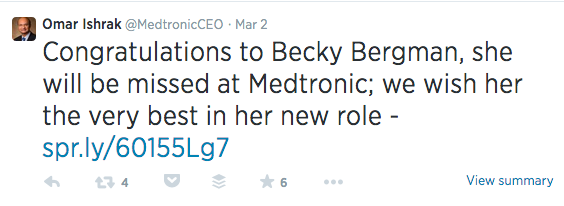When most brands think about engaging their employees via social media, what do you think comes to mind?
I tend to think most companies see employees as a conduit to selling and raising awareness for the firm.
And why shouldn’t they? Employees are essentially the face of any company. They are and will be your best salespeople.

So, that’s reasonable, right?
Sure. Except it’s not the biggest reason you should engage your employees via social media.
Not by a long shot.
The best reason? Employee engagement–and hence, employee satisfaction the retention (and actually, recruitment).
It’s a fantastic employee communications and engagement play.
Let me tell you more.
According to a recent LinkedIn survey, 54% of engaged employees read content by their company through social media. MORE THAN HALF. And 40% cite their company’s social media communication as the source for keeping informed on important news.
Here’s what that means: Employees are turning to Twitter and Facebook for news and information about their employer and potentially ignoring internal e-newsletters and intranets.
That’s not great news for employee communicators, who rarely have input or control over externally-facing company social channels.
But, as I think about it, it makes sense.
Employees are people, right? People are on Facebook. In droves. And using it more than we’d like to think. This much we know.
Others are heavy Twitter users (younger people). Yet others are Instagram addicts. This is where they’re spending their time today.
Meanwhile, younger generations are tired of email. And, even for those generations that prefer email (Gen X, Boomers), they have so MUCH email in their inboxes, corporate communications are either lost in the shuffle or completely overlooked.
So, couldn’t social channels cut through that clutter a bit better? Couldn’t you reach employees where they’re spending more time these days?
Sure, these tools aren’t behind a firewall. But, not all corporate information that is shared is proprietary. In fact, I would argue there’s a TON of information you could share with employees that would impact engagement and satisfaction that can be public.
Think about the following:
* Employee stories
* Company stories
* Employee perks (that they may not be aware of)
* Company performance (for publicly traded companies, at least)
Another important factor in this mix: Executives using–and supporting the use of–social media.
Case in point: Omar Ishrak from Medtronic (@MedtronicCEO on Twitter).
A lot of what Mr. Ishrak does on Twitter falls into this employee engagement bucket. He may not be doing it with the sole goal of employee engagement, but if you look closely, it certainly has to be part of the agenda.
Mr. Ishrak consistently recognizes employees and their efforts on Twitter–a great way to build employee morale.
Thank you to MDT employees around the world; I appreciate your efforts & commitments that contributed to our FY14 #MDTEarnings
— Omar Ishrak (@MedtronicCEO) May 20, 2014
Mr. Ishrak regularly tweets earnings news and information–great way for employees to get the overall gist of earnings reports without having to sit in on the full call (or read it in the newspaper the next day).
Our FY14 results represent another year of delivering consistent results; made solid progress in a number of areas #MDTEarnings — Omar Ishrak (@MedtronicCEO) May 20, 2014
Finally, Mr. Ishrak recognizes employees regularly–although I would have suggested he use exact names in a tweet like this. This is a long way of saying exec Twitter accounts may end up being a much better employee communications channel than a public-facing one. What do you think? Agree/disagree?
Congrats to 5 outstanding Medtronic #employees recognized with our internal Momentum Award for their community volunteer service globally.
— Omar Ishrak (@MedtronicCEO) May 12, 2014

0 Comments